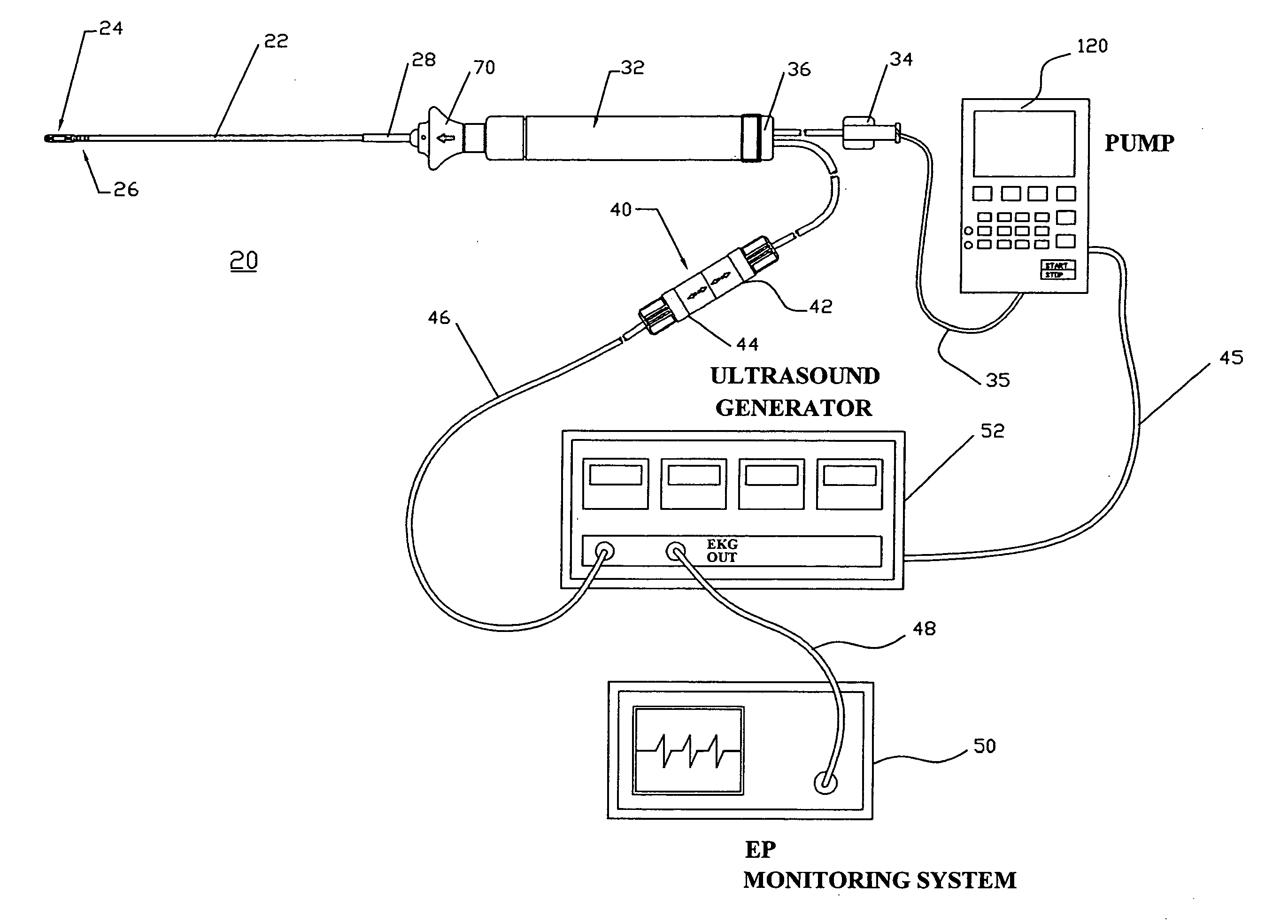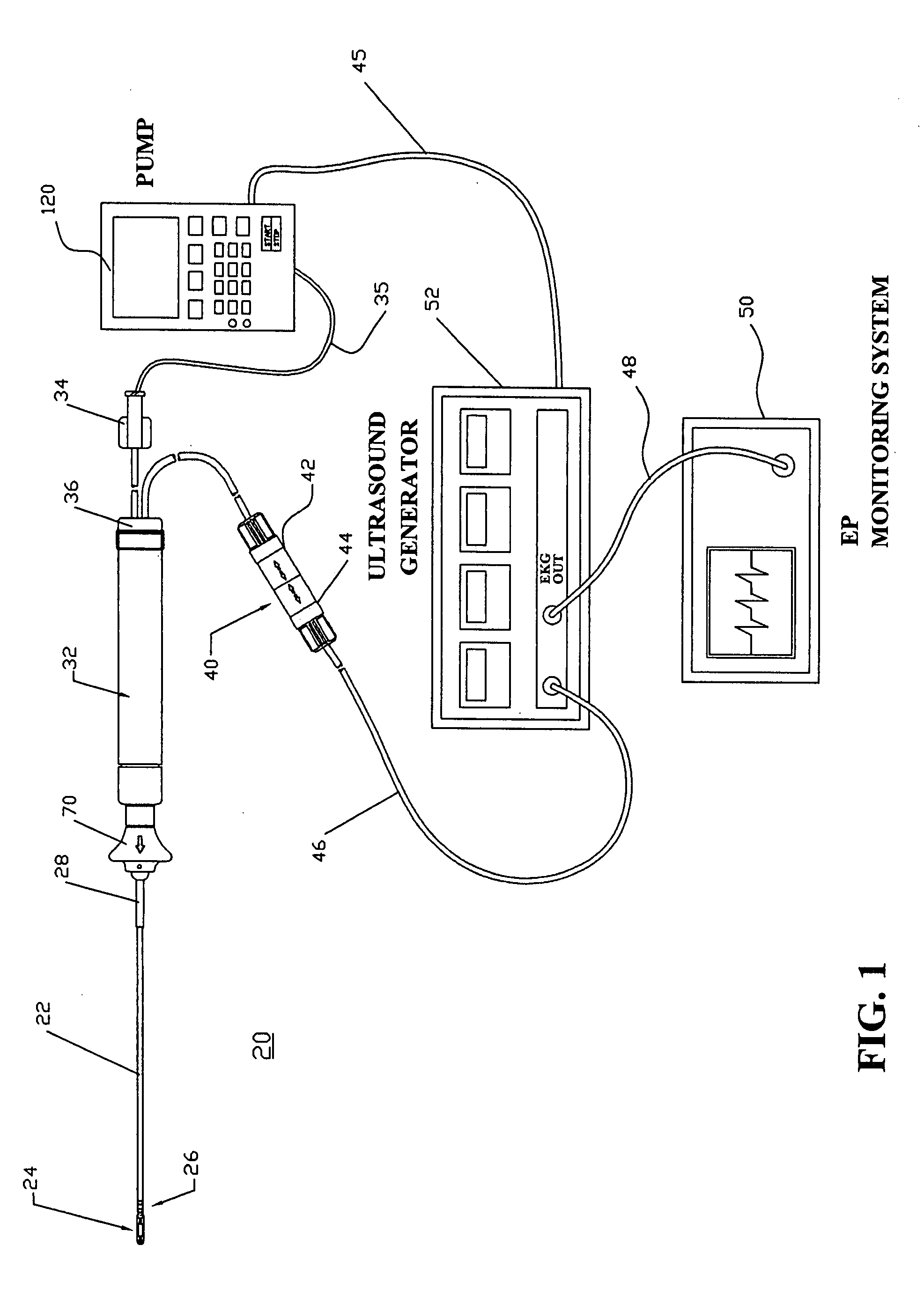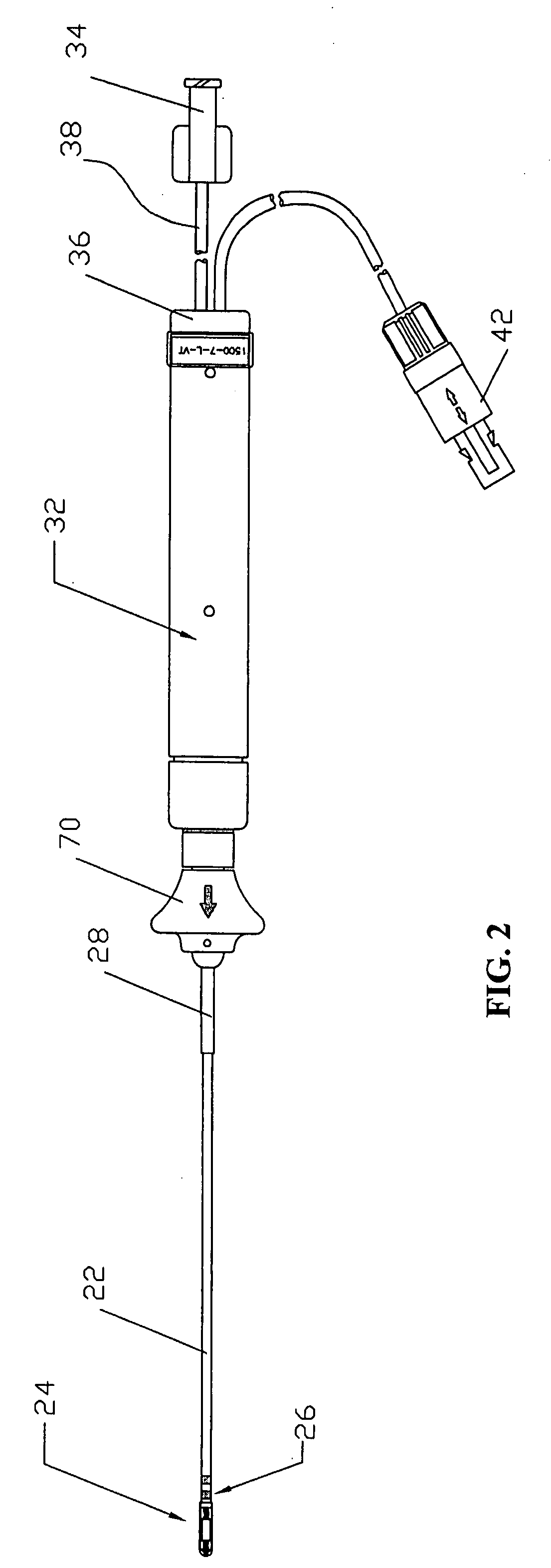Non-contact tissue ablation device and methods thereof
a tissue ablation and non-contact technology, applied in the field of body tissue mapping and ablation devices, can solve the problems of not treating the underlying, unable to accurately position the catheter, and rapid heart contractions or tachycardias, etc., to achieve the effect of accurate positioning of the catheter
- Summary
- Abstract
- Description
- Claims
- Application Information
AI Technical Summary
Benefits of technology
Problems solved by technology
Method used
Image
Examples
Embodiment Construction
[0024]The following detailed description is of the best presently contemplated modes of carrying out the invention. This description is not to be taken in a limiting sense, but is made merely for the purpose of illustrating general principles of embodiments of the invention. The scope of the invention is best defined by the appended claims. —In certain instances, detailed descriptions of well-known devices, compositions, components, mechanisms and methods are omitted so as to not obscure the description of the present invention with unnecessary detail.
[0025]The present invention provides a catheter for ablating body tissue of the interior regions of the heart. The catheter includes a handle assembly, a shaft, and a distal tip section coupled to the distal end of the shaft. The distal tip section has a non-compliant and non-porous cap that has a tubular wall that defines a bore, and an ablation element that is housed inside the bore and spaced apart from the wall of the cap.
[0026]Eve...
PUM
 Login to View More
Login to View More Abstract
Description
Claims
Application Information
 Login to View More
Login to View More - R&D
- Intellectual Property
- Life Sciences
- Materials
- Tech Scout
- Unparalleled Data Quality
- Higher Quality Content
- 60% Fewer Hallucinations
Browse by: Latest US Patents, China's latest patents, Technical Efficacy Thesaurus, Application Domain, Technology Topic, Popular Technical Reports.
© 2025 PatSnap. All rights reserved.Legal|Privacy policy|Modern Slavery Act Transparency Statement|Sitemap|About US| Contact US: help@patsnap.com



